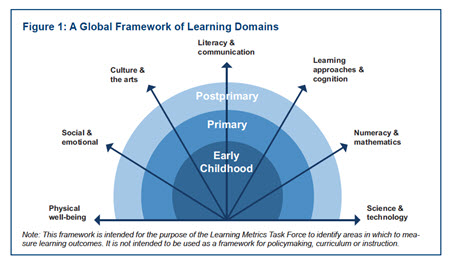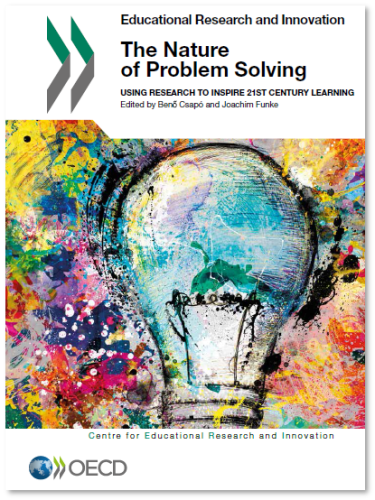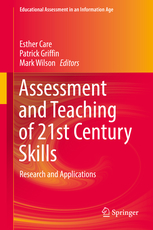Over the last few weeks, Allison Anderson has written about the recent UN High-Level Panel meeting in Monrovia and other pieces in the “multilayered puzzle that is the post-2015 process.” The Learning Metrics Task Force, convened last summer by UNESCO’s Institute for Statistics and the Center for Universal Education at Brookings, seeks to provide another important piece of the post-MDG puzzle.
Comprised of national and regional governments, U.N. Education for All-convening agencies, regional political bodies, civil society and donor agencies, the task force is working on a fast-paced schedule leading to September 2013 to build global consensus on measuring learning and make concrete recommendations to inform the post-2015 agenda. The first report from the task force, “Toward Universal Learning: What Every Child Should Learn,” presents the results of the first step in that process.
Before the task force could consider which measures of learning to recommend for inclusion in global development goals, it first had to answer some foundational questions:
-
- Are there essential competencies that all children and youth need to master to be successful in school and life, regardless of where they live?
-
- Should the task force limit its recommendations to what is measurable now, or should it also consider opportunities for expanding current capacity for measurement?
To answer these questions, the task force sought guidance from a technical working group of 37 experts in early childhood, primary and postprimary education, as well as feedback gathered through global consultation from more than 500 stakeholders in 57 countries. Here’s what they learned.
Seven Domains of Learning
The task force identified the following seven domains of learning as important for all children and youth:
-
- Physical well-being
-
- Social and emotional
-
- Culture and the arts
-
- Literacy and communication
-
- Learning approaches and cognition
-
- Numeracy and mathematics
-
- Science and technology
All seven domains are applicable from early childhood through postprimary, although at different stages some domains are more relevant than others.
The task force also learned that there is broad interest globally in exploring ways to measure learning beyond literacy and numeracy, where the current capacity for assessment is concentrated. Accordingly, the following framework was developed as the basis for the next set of task force recommendations. Figure 1 represents the task force’s vision for what every child across the globe should learn and be able to do, whether at the classroom, system or global level, by the time they reach postprimary age.

Finally, the task force charged the second technical working group on measures and methods with investigating a “hybrid model” for measuring learning, which would look at two tracks: improving the measurement of learning at a global level and at a national or subnational level.
Next Steps
Later this week the task force will meet in Dubai for the second in-person convening. Over two days, the group will hear options for this hybrid model and make final decisions on what it should look like. In the third and final phase of the project, the task force will consider how these measurements might be implemented to build national, regional and global capacity for assessment, and ultimately to improve learning for children and youth around the world. We look forward to sharing these decisions as they develop.
For more information about the Learning Metrics Task Force, visit brookings-edu-2023.go-vip.net/learningmetrics or email [email protected] to receive updates.






Commentary
Toward Universal Learning: What Every Child Should Learn
February 19, 2013